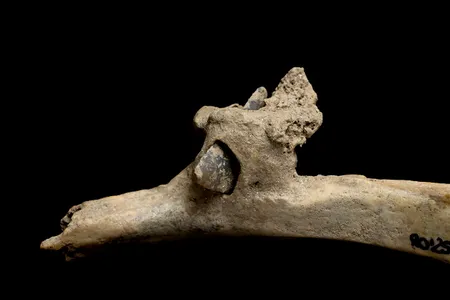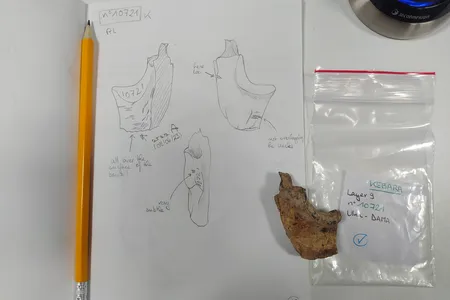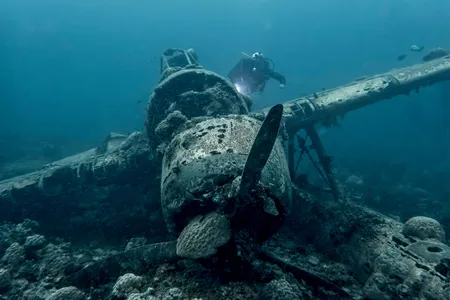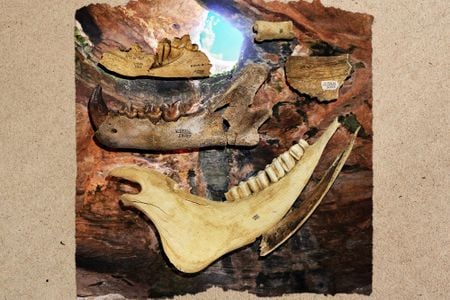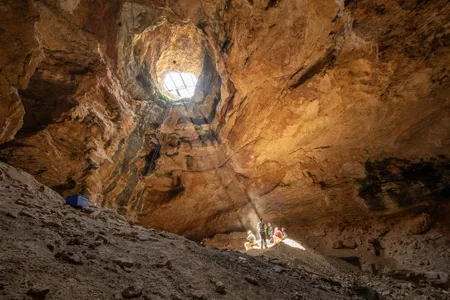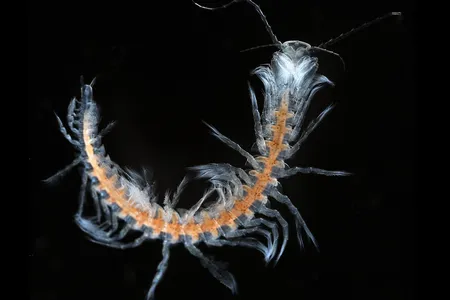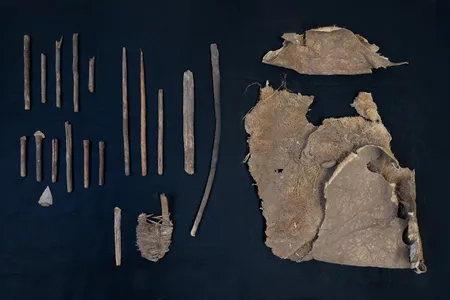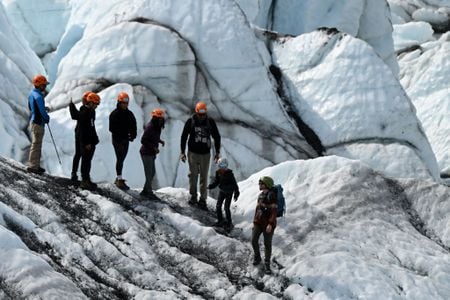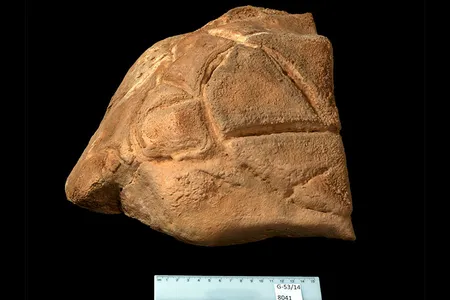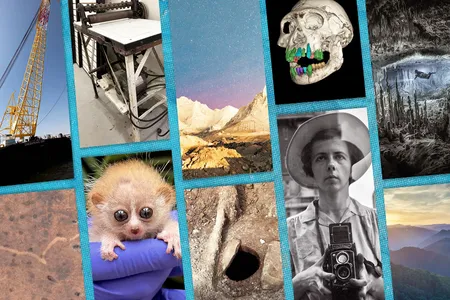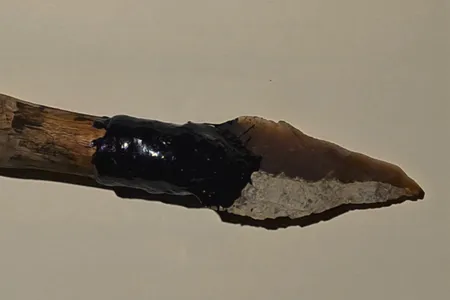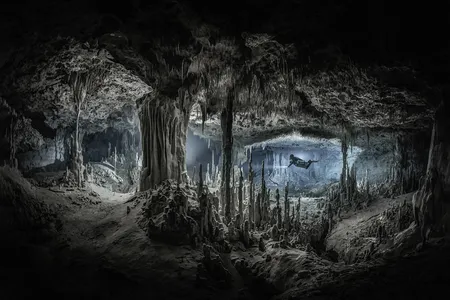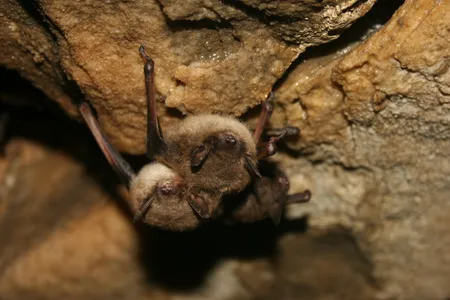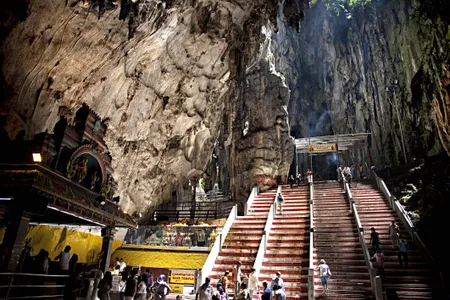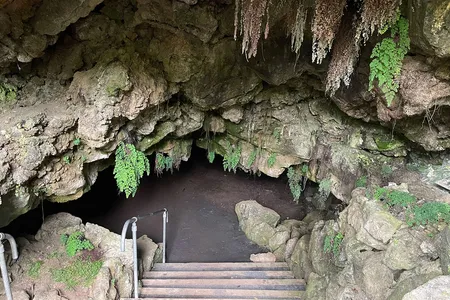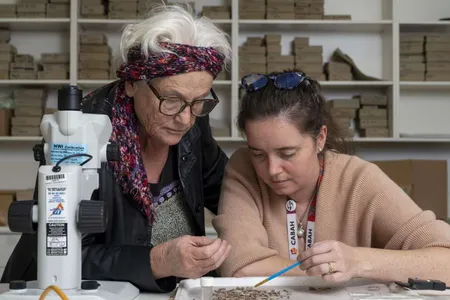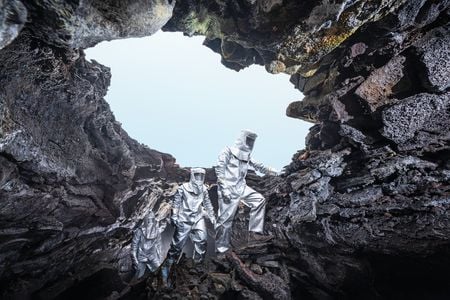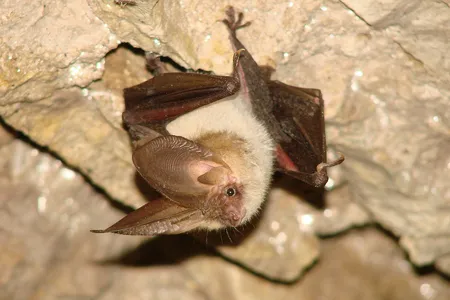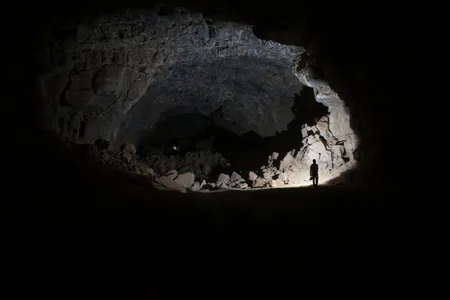An Archer Shot This Bronze Age Human in the Back. 4,000 Years Later, the Arrow Is Still Embedded in the Victim’s Rib Bone
The attack took place during a period of conflict between groups living in the Pyrenees mountains in modern-day Spain
Cut Marks on Animal Bones Suggest Neanderthal Groups Had Their Own Unique Culinary Traditions
Neanderthals in two nearby caves used different techniques when butchering animal carcasses in what is now Israel, according to a new paper
How Underwater Archaeology Brings Secrets to the Surface, From Lost Shipwrecks to Submerged Cities
An immersive new exhibition at the Intrepid Museum in New York City spotlights the science and technology behind the discipline
Journey Into a Prehistoric Cave That Trapped and Entombed Animals for Millennia
The animals that plummeted 85 feet into Wyoming’s Natural Trap Cave provide a layered history of life dating back to the Pleistocene
A Fungal Disease Ravaged North American Bats. Now, Researchers Found a Second Species That Suggests It Could Happen Again
White-nose syndrome caused millions of bat deaths, and scientists are sounding the alarm that a second fungus could be disastrous if it reaches American wildlife
A Trove of Ice Age Fossils Buried in a Wyoming Cave Is Rewriting Our Understanding of Prehistoric Animals
At a site known as Natural Trap Cave, a team of scientists are rappelling down to uncover the secrets of what the Earth was like during the Pleistocene
You Might Think of Shrimp as Bugs of the Sea. But a Remarkable Discovery Shows the Opposite: Bugs Are Actually Shrimp of the Land
A recent study suggests that insects branched out from crustaceans on the tree of life
Archaeologists Uncover a ‘Monumental’ Hunting Kit in Texas That May Be the Oldest Found in North America Yet
The artifacts discovered in a cave—which include dart tips, a boomerang and a spear-throwing tool—were dated to as far back as 7,000 years ago
Seven Ways to Explore Alaska’s Endangered Glacial World
With the state’s glaciers retreating at alarming rates, there is no time like now to trek, climb, paddle and fly to see them
A Mysterious Boulder Carved to Look Like a Tortoise Shell May Offer Evidence of the Middle East’s Earliest Ritual Ceremonies
The 35,000-year-old rock was found in Manot Cave, which was inhabited by both prehistoric humans and Neanderthals
Ten Top Smithsonian Stories of 2024, From a Mysterious Underground Chamber to Dazzling Auroras
The magazine’s most-read articles of the year included a close-up look at the adorable yet venomous pygmy slow loris, a profile of a little-known 20th-century street photographer and a majestic journey with divers into Mexico’s underwater caves
A 65,000-Year-Old Hearth Reveals Evidence That Neanderthals Produced Tar for Stone Tools in Iberia
While Neanderthals have been found to create glue-like substances with other materials, this finding, if confirmed, would be the first sign of Neanderthals burning the rockrose plant to make tar
Divers in Mexico’s Underwater Caves Get a Glimpse of Rarely Seen Artifacts, Fossils and Human Remains
Cenotes in the Yucatán Peninsula are time capsules preserving remnants of Maya culture and fossils of extinct megafauna
The Surprising Link Between Bats Dying and Human Infant Mortality
A new study finds that when bats in U.S. counties were decimated by the deadly white-nose syndrome, human deaths followed closely behind
From Cisterns to Temples, These Twelve Underground Worlds Are Open for Exploring
Some of these age-old subterranean spaces have even been transformed into amusement parks, art galleries and restaurants
Bringing Auckland’s Volcanic Underworld to Light
Scientists are working to map and protect the city’s underground tunnels so they aren’t destroyed during construction
Archaeologists Discover Clues to Ancient Migration Route That Brought Humans to Australia
New research offers evidence that humans did not inhabit the island of Timor until around 44,000 years ago, suggesting it was not part of the original migration route from Southeast Asia to Australia
Journey Into the Fiery Depths of Earth’s Youngest Caves
What Iceland’s volcanoes are revealing about early life on our planet
How a Fantastical Labyrinth Became a Crucial Habitat for Europe’s Bats
After scientists documented the flying mammals in the Piusa Sand Caves, dug by miners a century ago, conservationists strove to protect the vital habitat
Extensive Desert ‘Lava Tubes’ Sheltered Humans for 7,000 Years, Archaeologists Find
Formed after volcanic activity, the underground caves periodically hosted early humans and their livestock in Saudi Arabia, facilitating cultural exchange
Page 1 of 7
